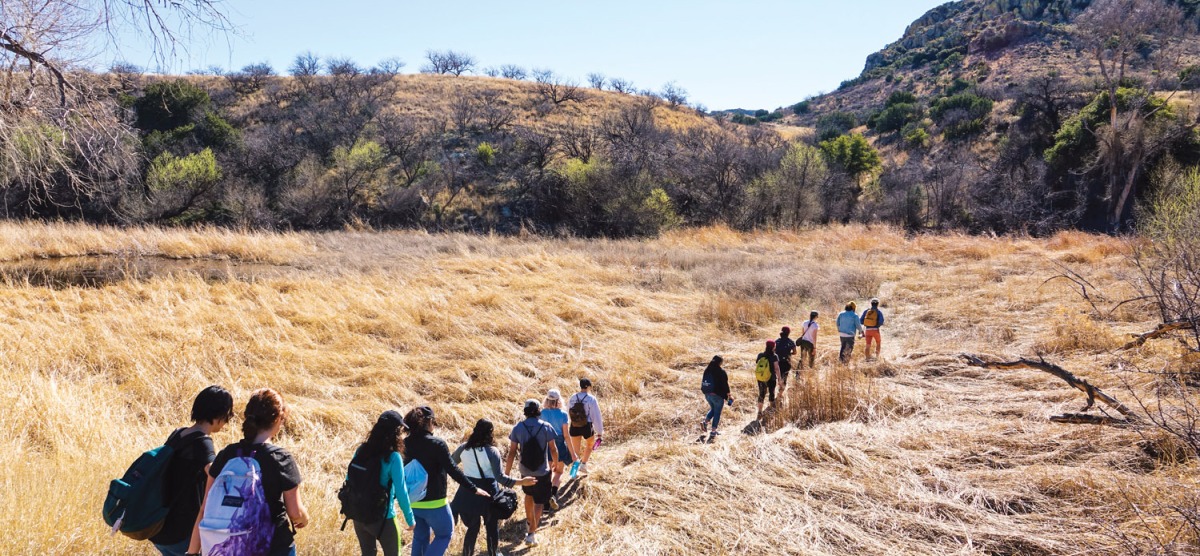
Border Stories in 360° Focus
Courses give students an up-close look at migration in different contexts.
"Although my father is now a permanent resident of the U.S., he was undocumented when he immigrated to the country 20 years ago,” says Sandra Torres ’19.
A student in the Migrations and Borderlands 360°, Torres had her father’s experience brought home to her during a visit to the Tucson federal courthouse, where the class was observing the legal proceedings of Operation Streamline, an initiative that sentences unauthorized border-crossers.
“The hard part was that the detainees were all in shackles from their wrists, waists, and ankles, making them look as if they were some kind of criminals, which they were definitely not,” says Torres. “My father too was detained and stood in those same shackles. Nothing hurt more than to know that nothing has changed over the past 20 years.”
For the 360°, Torres’s fellow students used the lenses of cultural studies and sociology to examine migration in different national contexts and historical moments. The class had a particular focus on the complex factors shaping migrations between Latin America and the United States, Latin America and Spain, and Asia and Latin America. They probed questions of imperialism, economic and political policies, xenophobic discourse, transnational belonging, cultural citizenship, and how individuals and families are transformed through the process of migration.
The 360° took students to the U.S.-Mexico border and included time in Tucson, in Tijuana, Mexico, and at the border wall itself. “I thought I was prepared,” Torres says of her encounter with the wall, “but I honestly wasn’t. Just seeing the long bars dominating the landscape outside my window, I was honestly shocked.”
The itinerary included dinner with migrants at Casa del Migrante, a walk along a desert migrant trail with members of the organizations BorderLinks and No More Deaths (pictured above), a discussion of a production of La Calle at the Borderlands Theater, a photography workshop at Hacienda del Rio, and a meeting with an immigration lawyer.
¿Que harias Tu?
In Tijuana, a woman approached Torres and asked her to deliver a message to her daughter Cinthia, whom she had last seen 26 years ago on the day the woman had been deported. The question that burned for Torres was, "What should I do?"
Cluster Courses
Latina/o Culture and the Art of Migration (English), Sociology of Migration: A Cross-Cultural Overview of Contemporary Challenges (Sociology), and Migration in the Hispanic World (Spanish).
At Bryn Mawr
On returning to Bryn Mawr, the 360° students compiled their notes from their observations of the proceedings in Tucson and sent them to the End Operation Streamline with the hope of abolishing this practice.
On Display
For a Canaday Library exhibition, students paired one of their own photos with one that appeared in an exhibition at the Mexican research and graduate institution El Colegio de La Frontera Norte. See the catalog.
The Wall
As of late 2015, there were 652.7 miles of wall along the roughly 2,000-mile border. According to the Department of Homeland Security, the cost to build it was around $2.3 billion.
Published on: 09/06/2017